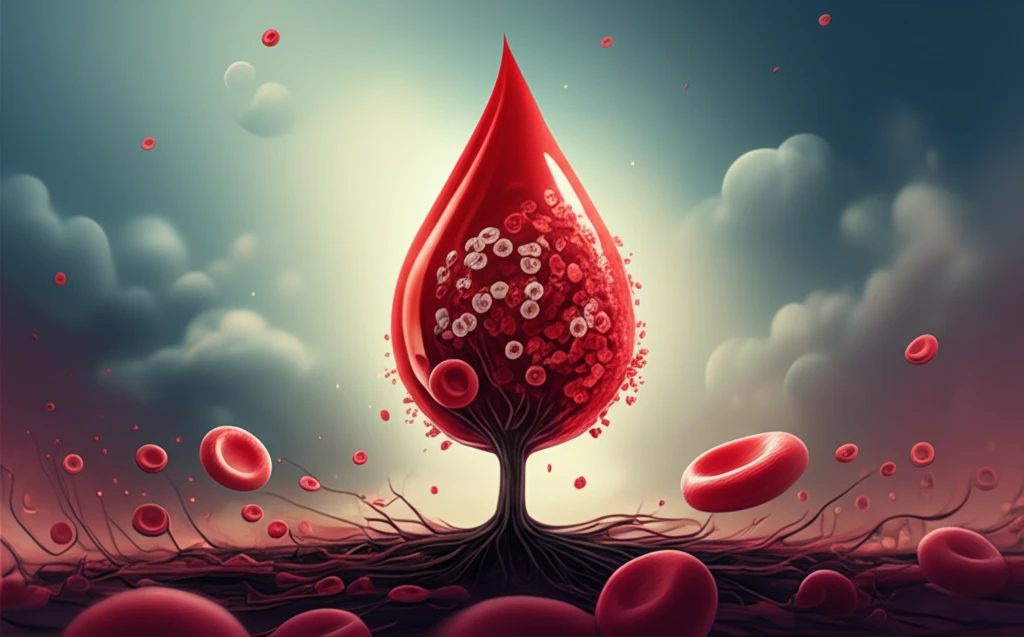
Decoding Blood Tests: A Simple Guide to Understanding Your Health
"What your hematological markers are really telling you about your well-being."
In today's medical world, blood tests are essential for assessing the safety and efficacy of both conventional drugs and natural remedies. These tests, which analyze various components of your blood, provide valuable insights into how these substances interact with your body at a cellular level.
When a toxin or its by-products interact with your cells, it can cause significant changes in your hematological parameters—the different measurements in your blood. These changes can happen quickly or gradually, and they often affect the structure and function of your tissues.
In a clinical setting, these blood indices are crucial for diagnosing, treating, and preventing diseases, as well as for understanding how diseases progress. By assessing hematological indices, healthcare professionals can detect adverse effects of foreign compounds on your blood constituents, offering a predictive view of potential toxicity in humans, especially when interpreted alongside animal studies.
What Can Red Blood Cell (RBC) Counts Reveal?

Red blood cells, also known as erythrocytes, are essential enucleated cells packed with hemoglobin, the protein responsible for carrying oxygen. Typically, women have an RBC concentration of approximately 3.85-5.16 million/µL, while men have 4.54-5.78 million/µL [14]. A decrease in these numbers often indicates anemia, a condition where your blood doesn't have enough healthy red blood cells to carry adequate oxygen to your body's tissues [14]. This can result from the stimulation of the lipid peroxidative system by toxins, leading to the production of lipid peroxides that hemolyze RBCs, especially in diabetic patients [15].
- Hemoglobin (Hb): This is the primary protein of RBCs, essential for oxygen transport. Normal Hb levels range from 12.0 to 17.2 g/dL. Low levels indicate anemia, while high levels may result from dehydration or other conditions [19, 20].
- Hematocrit (PCV): Represents the percentage of red blood cell volume in your blood. Normal values are 42-52% for males and 36-48% for females. Abnormalities can point to anemia or polycythemia, influenced by hydration levels and other factors [19].
- Mean Cell Volume (MCV): Measures the average size of your red blood cells. The normal range is 78.5-96.4 fL. Low MCV indicates microcytic anemia (small RBCs), often due to iron deficiency, while high MCV indicates macrocytic anemia (large RBCs), potentially from vitamin B12 or folate deficiency [20].
- Mean Cell Hemoglobin (MCH): This reflects the average amount of hemoglobin inside a single red blood cell, with a normal range of 27-33 pg. Low values are associated with iron deficiency and thalassemia, while high values occur in macrocytic anemias [20, 29].
- Mean Corpuscular Hemoglobin Concentration (MCHC): This calculates the average hemoglobin concentration inside a single red blood cell, with a reference range of 32.6-37.7 g/dL. Abnormal levels are key indicators of iron deficiency or hereditary spherocytosis [20, 31].
The Importance of Regular Monitoring
The bioavailability of chemical compounds at toxic levels in biological media can significantly alter hematological indices. Regular monitoring of these indices is essential, as they reflect normal biological processes, disease states, and responses to therapeutic interventions. Changes in these markers can provide early warnings about potential health issues, allowing for timely intervention and management.
